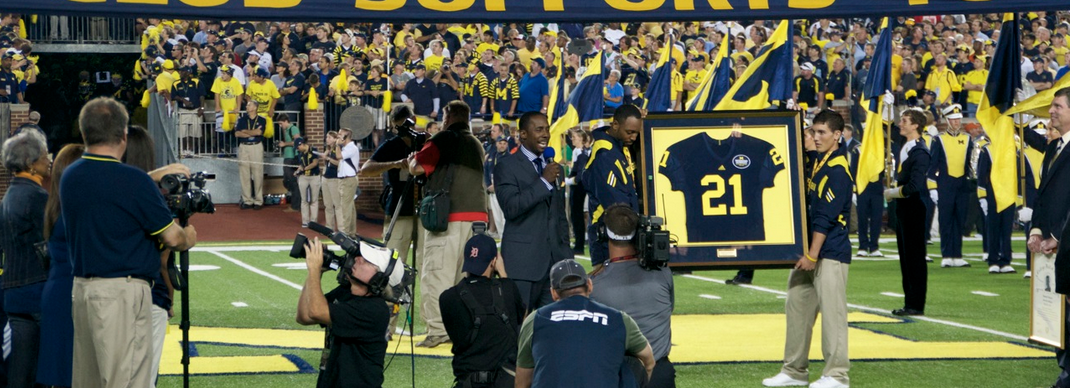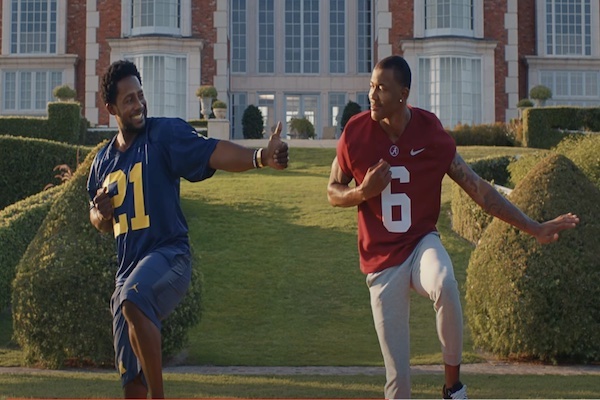By: Associated Press
SOUTH BEND, Ind. — Desmond Howard shook his head and smiled. It’s been 20 years since he won the Heisman Trophy at Michigan as an electrifying pass catcher and kick returner. To him it just doesn’t seem possible it happened so long ago.
“Time just flies doesn’t it? Twenty years is unbelievable. That’s one of those things when somebody says it you kind of got to do the math in your head, like ‘Yeah I guess he’s right,'” Howard said Saturday night when he was enshrined with 15 other players and four coaches into the College Football Hall of Fame. “Wow.”
Asked what had changed most in the game since he was flying over fields in Ann Arbor, even striking a Heisman pose after scoring a touchdown, Howard was quick with an answer, just as he was on the field. The spread offense with multiple formations and receivers.
“Everyone wants to spread people out and try to get mismatches out there in space,” he said. “When I played — if I did that can you imagine the numbers?
“You got to understand I won the Heisman within the rhythm of our offense. … We had guys who could tote the pill and we toted it, we just didn’t throw the ball to 21. We tried to run the ball, that was still our primary goal.”
Also enshrined Saturday night were: Dennis Byrd (North Carolina State, DT, 1965-67); Ronnie Caveness (Arkansas, LB, 1962-64); Ray Childress (Texas A&M, DL, 1981-84); Dexter Coakley (Appalachian State, LB, 1993-96); Randy Cross (UCLA, OG, 1973-75); Sam Cunningham (Southern California, RB, 1970-72); Michael Favor (North Dakota State, C, 1985-88); Charles Haley (James Madison, DE, 1982-85); Mark Herrmann (Purdue, QB, 1977-80); Clarkston Hines (Duke, WR, 1986-89); Howard (Michigan, WR, 1989-91); Mickey Kobrosky (Trinity College, Back, 1933-36); Chet Moeller (Navy, DB, 1973-75);
Jerry Stovall (LSU, HB, 1960-62); Pat Tillman (Arizona St., LB, 1994-97); Alfred Williams (Colorado, LB, 1987-90).; coach Barry Alvarez (Wisconsin, 1990-2005); coach Mike Kelly (Dayton, 1981-2007); coach Bill Manlove (Widener, 1969-91; Delaware Valley, 1992-95; La Salle, 1997-2001); coach Gene Stallings (Texas A&M, 1965-71; Alabama, 1990-96).
Byrd, Tillman and Kobrosky were enshrined posthumously. After his college days, Tillman went on to an NFL career with the Cardinals. After three seasons in the NFL, he enlisted in the Army. He was killed in Afghanistan in April 2004.
When Tillman’s bio was read during the enshrinement dinner Saturday night, he was given a standing ovation by the crowd.
Haley emerged from little-known James Madison to become one of the NFL’s most ferocious pass rushers and played on five Super Bowl championship teams with Dallas and San Francisco.
“I never dreamed of going to college and when I got to college I never dreamed of going to the pros,” Haley said. “I was fortunate enough to have coaches to be visionaries and build a foundation and give me a skill set. … It’s not all about how athletic you are, it’s about having the smarts to understand all the pieces of the puzzle that is going around you at the time.”
Cunningham had the nickname “Bam” for his punishing running style. He had four touchdowns in a 1973 Rose Bowl win over Ohio State. In his first game in 1970 against Alabama, he scored two TDs and had 135 yards rushing against the then all-white Crimson Tide, leading a victory in a milestone performance. “It has afforded a lot of black athletes the opportunity to play wherever they want to play,” he said earlier.
Alvarez transformed a Wisconsin program that was struggling to win games into a Big Ten and national power and ended up winning three Rose Bowls. “It’s kind of a culmination,” he said of his selection. “It’s what I did for a living. … It’s pretty special.” Alvarez said the transformation started with strong recruiting, especially making sure the Badgers kept their in-state talent, and an emphasis on building a big offensive line. “We just thought we could put it together,” he said.





About The Author: ME
More posts by ME